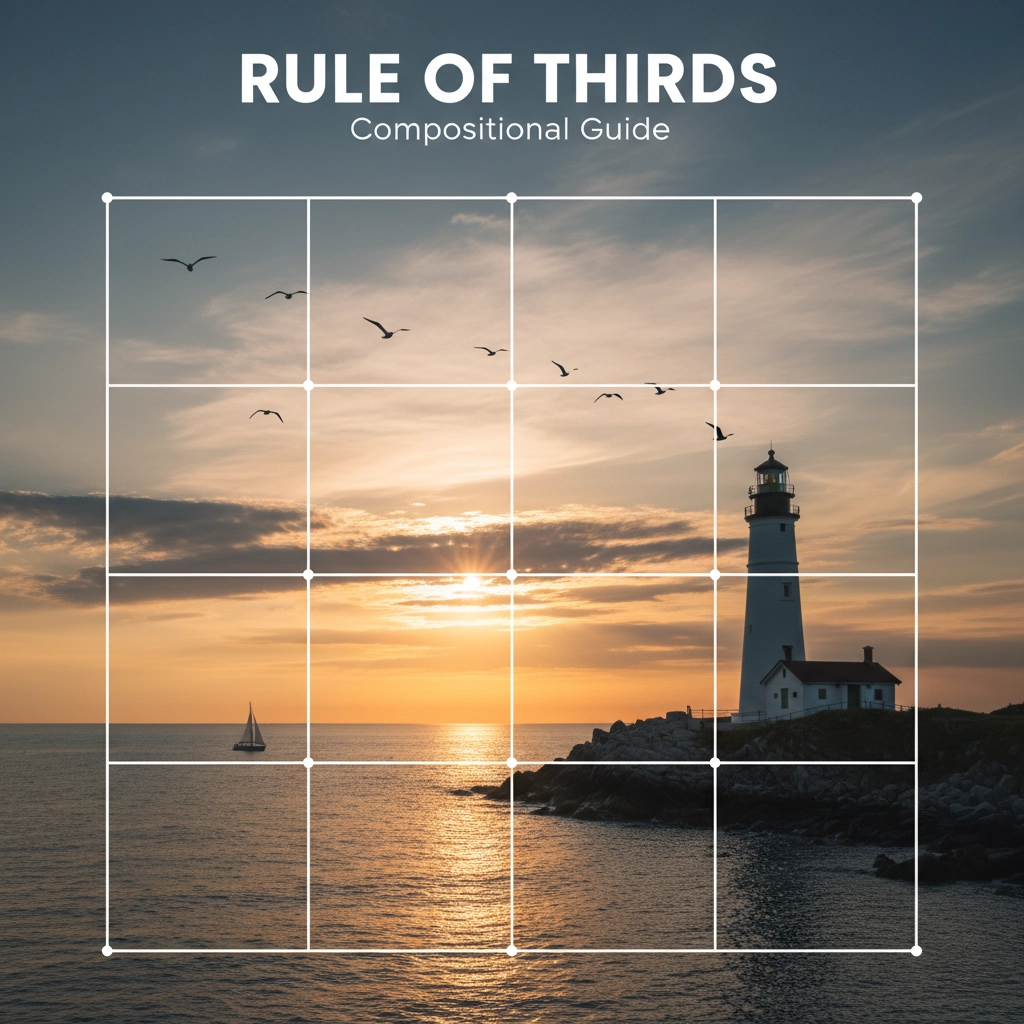Composition Rule Calculator, Elevate Your Photography Composition Tips
Understanding composition is the cornerstone of producing exceptional photographs. It’s the art of arranging elements within the frame in a way that not only captures the subject but also conveys emotion, tells a story, and draws the viewer’s eye. Composition forms the foundation upon which all other aspects of photography, from lighting to perspective, are built. Whether you’re an amateur enthusiast or a professional photographer, mastering composition is the key to transforming ordinary scenes into extraordinary visual narratives. In this quick guide, I’ll delve into the world of 5 photography composition tips and explore how fundamental knowledge in this area can elevate your photography to new heights.
Table of Contents
ToggleComposition Rule Calculator
Composition Calculator Table of Contents
Quick Guide Video
Quick Photography Composition Tips
| Composition Tip | Description |
|---|---|
| Rule of Thirds | Divide the frame into thirds and place subjects along the lines or at the intersections. |
| Leading Lines | Use lines or shapes in the scene to guide the viewer’s eye toward the subject. |
| Symmetry and Patterns | Seek out symmetry or repeating patterns for visually striking compositions. |
| Framing | Use natural elements like trees or arches to frame your subject and draw attention to it. |
| Golden Ratio | Apply this ratio (1.618) to create a balanced and aesthetically pleasing composition. |
| Fill the Frame | Get close to your subject to fill the frame and emphasize details and emotions. |
| Negative Space | Leave empty space around your subject to highlight it and create a sense of isolation or balance. |
| Leading Room or Space | Allow extra space in the direction a subject is moving to create a sense of movement and anticipation. |
| Background Awareness | Be mindful of your background to avoid distractions and ensure it complements the subject. |
| Rule of Odds | Use an odd number of elements (e.g., three, five) to create visual harmony and balance. |
| Perspective and Angle | Experiment with different angles and heights to provide unique viewpoints. |
| Use of Colour and Contrast | Utilize color and contrast to make your subject stand out and evoke specific moods. |
| Depth of Field | Adjust your aperture to control depth of field, blurring backgrounds for emphasis. |
| Storytelling | Think about the story or message your photo conveys and compose to express that narrative. |
| Experiment and Practice | Don’t be afraid to experiment with various techniques and practice regularly to improve your composition skills. |
How to Use the Photographic Composition Calculator

Photography composition is a critical aspect of creating visually appealing and engaging photos. Different composition rules can be applied to improve the aesthetics and impact of your images. This guide will walk you through using the “Composition Rule Calculator” to apply various composition grids to your photos. The calculator allows you to visualize and apply composition rules such as the Rule of Thirds, Golden Ratio, Diagonal Rule, Symmetry Rule, and Leading Lines Rule to your images.
Prerequisites
Before you begin, ensure that you have the following:
- A computer with a web browser.
- An image that you want to apply composition rules to. The image should be in a format supported by your web browser (common formats like JPEG, PNG, etc.).
Steps to Use the Composition Rule Calculator
Follow these steps to apply composition principles and rules to your image:
- Access the Composition Rule Calculator: Open your web browser and navigate to the webpage where the Composition Rule Calculator is hosted.
- Select a Composition Grid:
- Look for the “Select Composition Grid” dropdown menu on the webpage.
- Click on the dropdown menu, and you will see several composition grids listed, including “Rule of Thirds,” “Golden Ratio,” “Diagonal Rule,” “Symmetry Rule,” and “Leading Lines Rule.”
- Choose the composition grid that you want to apply to your image by clicking on it. Each grid has its unique characteristics and can significantly impact the composition of your photo.
- Upload Your Image:
- Find the “Upload an Image” section on the webpage.
- Click the “Choose File” or “Upload” button to select an image file from your computer. Make sure the image you choose is relevant to the composition grid you selected.
- Apply the Composition Grid:
- After selecting a composition grid and uploading your image, click the “Apply Composition Grid” button. This will initiate the process of applying the chosen grid to your image.
- View and Analyze the Result:
- Once the process is complete, you will see your uploaded image displayed on the webpage with the chosen composition grid overlaid on it.
- Take the time to analyze how the composition rule has been applied to your image. This can help you understand how different rules affect the visual balance and impact of your photos.
- Save or Share the Result (Optional):
- If you are satisfied with the result, you can choose to save or share the edited image using your browser’s options. This will allow you to keep a copy of the composition rule-applied image for reference or sharing with others.
- Experiment with Different Rules (Optional):
- If you wish to experiment with multiple composition rules on the same image, you can repeat the process by selecting a different composition grid from the dropdown menu and clicking the “Apply Composition Grid” button again.
- Close or Navigate Away (Optional):
- Once you have finished experimenting with composition rules, you can close the Composition Rule Calculator or navigate away from the webpage as needed.
Composition Calculator Conclusion
The Composition Rule Calculator is a valuable tool for photographers who want to explore and apply different composition rules to their images. By following the steps outlined in this guide, you can gain insights into how these rules can enhance the visual impact of your photos. Experimentation with composition is a great way to improve your photography skills and create more compelling images.
FAQs: How to Improve Your Photography Composition
Q1: How can I improve my photography composition?
A1: Improving your photography composition involves several key strategies:
- Study composition principles: Learn about the basic rules and guidelines of composition.
- Practice regularly: Experiment with different techniques and styles to refine your skills.
- Analyze great photos: Study renowned photographers’ work to understand their composition choices.
- Seek feedback: Share your work with peers or mentors to gain constructive critique.
- Be patient: Composition mastery takes time, so keep practicing and learning.
Q2: What are the basic rules of composition in photography?
A2: The basic rules of composition include:
- Rule of Thirds: Divide the frame into thirds and place subjects along the lines or intersections.
- Leading Lines: Use lines or shapes to guide the viewer’s eye to the subject.
- Symmetry and Patterns: Seek symmetry or repeating patterns for visual impact.
- Framing: Use natural elements to frame your subject and draw attention to it.
- Golden Ratio: Apply the golden ratio (1.618) for balanced and pleasing compositions.
Q3: What is the golden rule of composition in photography?
A3: The “golden rule” in photography often refers to the “Golden Ratio” or “Golden Spiral.” It’s a composition guideline where the frame is divided into sections based on the golden ratio (approximately 1.618). This creates a visually harmonious and balanced composition, often seen in nature and art.
Q4: What is the basic rule of composition?
A4: The basic rule of composition is subjective and varies by interpretation. However, the “Rule of Thirds” is commonly considered a fundamental composition guideline. It suggests dividing the frame into nine equal parts with two horizontal and two vertical lines. The main subject or points of interest are then placed along these lines or at their intersections to create a balanced and engaging composition.
Understanding and applying these composition rules can significantly enhance the visual appeal and storytelling capacity of your photographs.
Like what you read? Fuel my next post with a coffee – hit that PayPal button and keep the caffeine flowing!
[wpedon id=77]
Stephen Paul Young
I’m Steve (Stephen Paul Young), a landscape, digital and film photographer with a deep love for capturing the beauty of nature, light, and atmosphere. Whether I’m out at dawn chasing the perfect sunrise, exploring woodland trails, or experimenting with black-and-white film, photography is my way of seeing the world. I’m drawn to the small details and the big vistas alike, always looking for that moment where light, texture, and emotion come together. For me, photography isn’t just about taking pictures—it’s about storytelling, connection, and the joy of being present in the landscape.
You May Also Like

Ural Owl Photography: 5 Powerful Tips for Stunning Shots
5 September 2025
Pushing Kodak Tri-X 400: A Beautiful Black and White Journey
21 October 2024